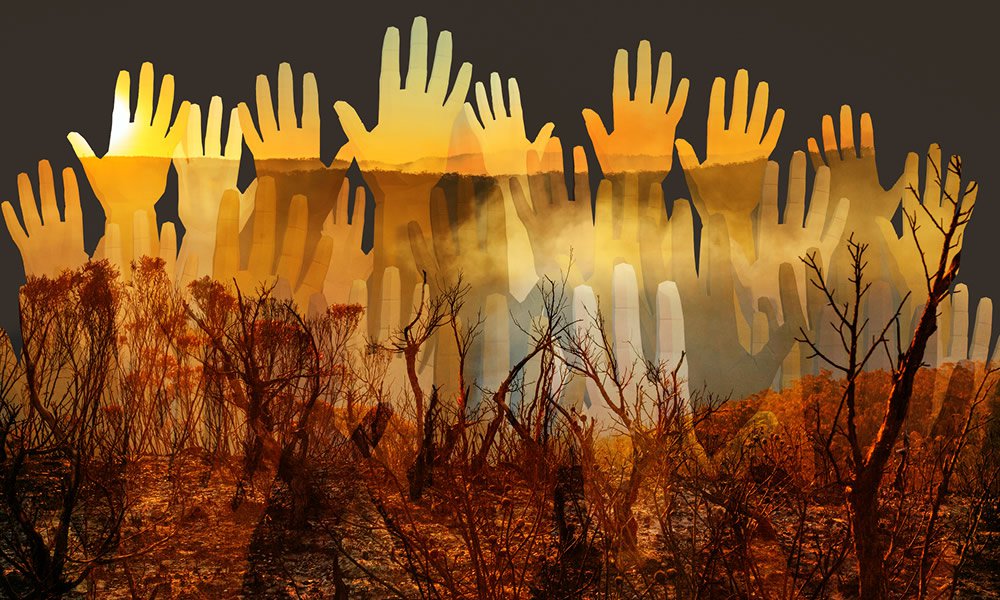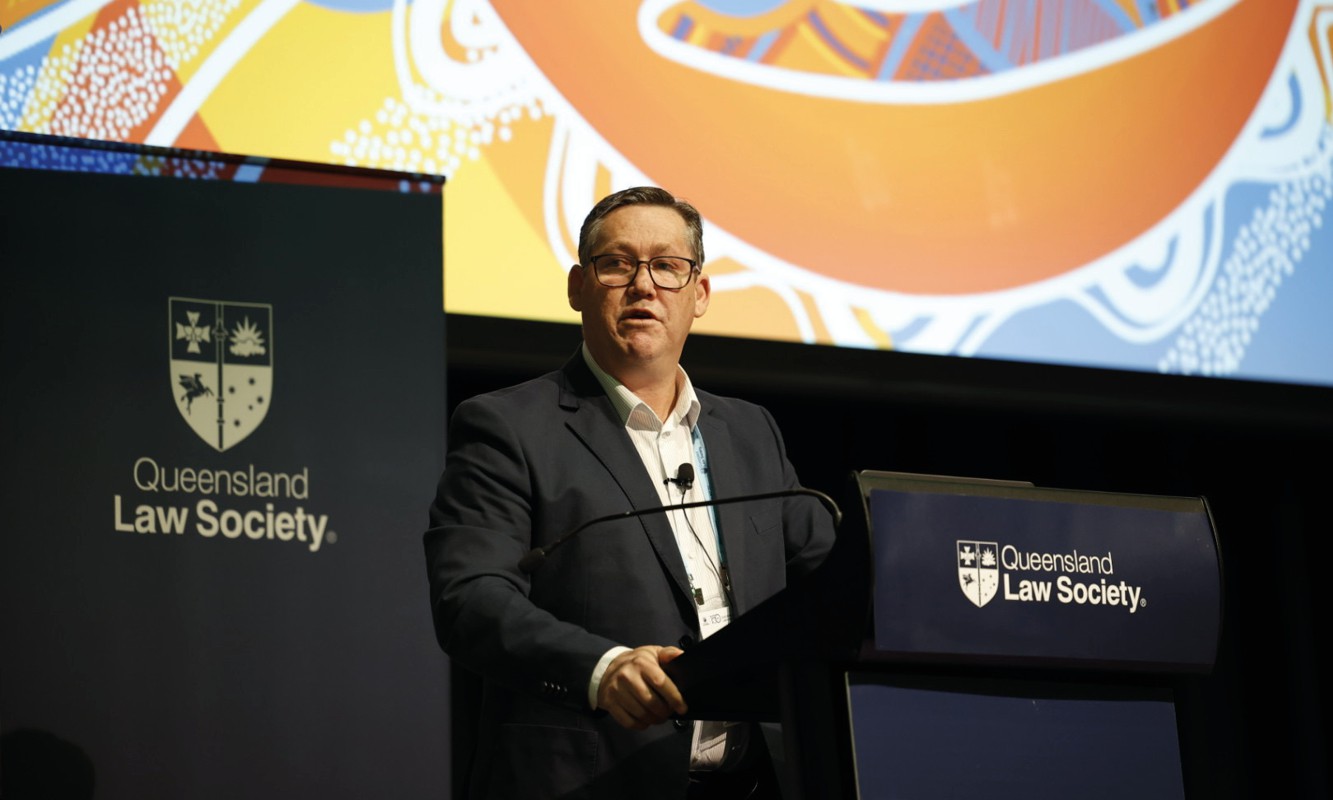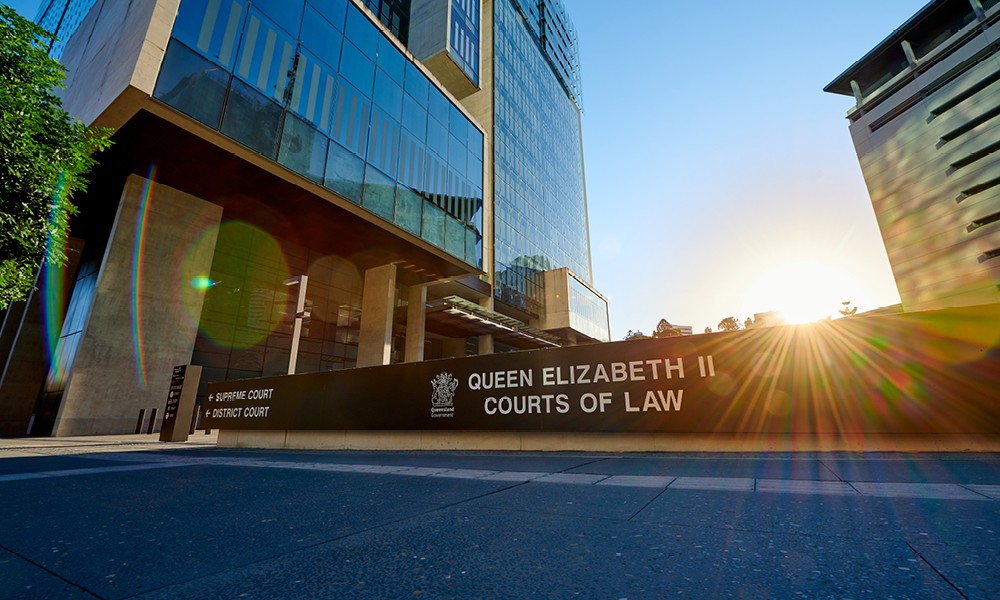Natural and other disasters bring turmoil to our lives–they bring risk to personal and family safety, disruption to our daily routines, property loss and the inevitable long road to recovery. Disasters also bring the likelihood of derogation of human rights principles by Government. Sitting alongside necessary limitations is the spectre of unnecessary overreach by Government, whereby our guaranteed rights and standards can be stripped away. There one day, gone the next.
Our rights are eventually restored in most cases, but during the response and recovery phase, our rights can remain suspended–effectively on hold. Sometimes rights are indefinitely affected by what began as temporary derogations continuing beyond the event or where laws and policies introduced to cope with the event are left in place, perhaps ‘just because’, or ‘just in case’. This article looks at the norms that guide how the Government is expected to balance human rights in its response to a disaster.
Firstly, what is a disaster?
Queensland’s Disaster Management Act 2003 defines a ‘disaster’ as “a serious disruption in a community, caused by the impact of an event, that requires a significant coordinated response by the State and other entities to help the community recover from the disruption.”[1] It goes on to define ‘serious disruption’ as loss of human life, or illness or injury to humans; widespread or severe property loss or damage; or widespread or severe damage to the environment. In just the last decade Queensland’s disasters have included cyclones, floods, bushfires, hailstorms, dust storms and most recently the COVID-19 pandemic.[2] Because similar disasters are experienced worldwide, the response to disasters has been the subject of considerable global cooperation, including the development of normative standards to guide nation-states in their response, risk reduction and resilience.
International disaster norms
Disasters have a specific human rights context, guided by a range of international normative standards that Australia has committed to uphold. Firstly, the Sendai Framework for Disaster Reduction 2015-2030[3] (the Sendai Framework) is led by the United Nations Office for Disaster Risk Reduction (UNDRR)[4] and is reflected in Australia’s National Disaster Risk Reduction Framework,[5] the National Strategy for Disaster Resilience[6] and our State Strategies and Plans including the Queensland Strategy for Disaster Resilience.[7]
The Sendai Framework has a number of Guiding Principles including art 19(c), which identifies the need to balance disaster management with the protection and promotion of human rights:
c) Managing the risk of disasters is aimed at protecting persons and their property, health, livelihoods and productive assets, as well as cultural and environmental assets, while promoting and protecting all human rights, including the right to development;
Australia’s National and state policies don’t overtly reflect this balancing act. Jurisdictions like Queensland with human rights laws will inevitably see tension between the operation of disaster management through disaster governance and Government’s ability and willingness to promote and protect human rights. Governments can continue to promote and protect human rights through disaster situations but they must observe their obligations to respond to disaster in a way that only derogates from human rights where such derogation is unavoidable, and in the words of our own Human Rights Act 2019 (Qld), where limitation of rights is authorised.
Derogation from civil and political rights under the ICCPR is set out in article 4:
Article 4
- In a time of public emergency which threatens the life of the nation and the existence of which is officially proclaimed, the States Parties to the present Covenant may take measures derogating from their obligations under the present Covenant to the extent strictly required by the exigencies of the situation, provided that such measures are not inconsistent with their other obligations under international law and do not involve discrimination solely on the ground of race, colour, sex, language, religion or social origin.
Article 4(2) qualifies this by ensuring that some civil and political rights are non-derogable (cannot be suspended) including among others, the Right to Life,[8] Freedom from torture or to cruel, inhuman or degrading treatment or punishment,[9] Freedom from slavery and servitude (but not forced work),[10] right to recognition everywhere as a person before the law,[11] and right to freedom of thought, conscience and religion.[12] The Human Rights Committee has also set out expectations in General Comment 29 – States of Emergency (Article 4).[13] The General Comment notes that “The restoration of a state of normalcy where full respect for the Covenant can again be secured must be the predominant objective of a State party derogating from the Covenant.”[14] The Human Rights Committee has also commented on nation-states’ derogations during COVID-19.[15] Interestingly, the International Covenant on Economic, Social and Cultural Rights (ICESCR) does not contain a derogation clause.
In Queensland, Human Rights Act at section 13 only allows limitation subject to several key principles. Importantly, the limitation must reasonable and demonstrably justified in a free and democratic society based on human dignity, equality and freedom. It must also account for the nature of the human right to be limited (including its importance), the limitation’s nature and purpose (including importance of the purpose), and whether other less restrictive or reasonably alternative ways exist to achieve the purpose.
This test is a critical one and has been subject of several examples during the Queensland Government’s recent legislative response to COVID-19.[16] The Queensland Human Rights Commission and other agencies provide submissions to Parliament on the compatibility of COVID-19 legislation. The process is an important one in the dialogue model whereby Parliament is obliged to provide statements of compatibility pursuant to section 38 of the Act. The Act also allows for override declarations in exceptional circumstances including examples of “war, a state of emergency, exceptional crisis situation constituting a threat to public safety, health or order”.[17] Override declarations means the Human Rights Act does not apply to that specific law.[18]
Turning back to international disaster standards, the Sustainable Development Goals[19] also include disaster-related resolutions, for example in Disaster laws and policies that leave no one behind.[20] A new area of international law calledInternational Disaster Law (IDRL) has also developed, including Guidelines for the domestic facilitation and regulation of international disaster relief and initial recovery assistance. The Guidelines have been adopted[21] by the General Assembly with a range of commentary to explain their application.[22] These laws, policies and guidelines attempt to balance humanitarian considerations in the face of disaster.
International human rights laws
In the area of international human rights, relevant standards include the Siracusa Principles on the Limitation and Derogation Provisions in the International Covenant on Civil and Political Rights (the Siracusa Principles),[23] the Johannesburg Principles: National Security, Freedom of Expression and Access to Information[24] and the recent International Law Commission’s (ILC) Draft Articles on the Protection of Persons in the Event of Disasters.[25]
The Siracusa Principles relate particularly to the limitation and derogation provisions in the International Covenant on Civil and Political Rights (ICCPR). The principles provide commentary on the proper and the consistent application of the ICCPRs limitation provisions available to nation states under Declaration of Martial Law or States of Emergency. The principles acknowledge that emergency powers can be an instrument employed by governments to repress and deny the fundamental rights and freedoms of peoples. Given the Lion’s share of rights in the Human Rights Act are drawn from the ICCPR, the Principles deserve proper consideration by Government and are reflected in the override provisions.
The Draft Articles on the Protection of Persons in the Event of Disasters assert that the inherent dignity of the human person shall be respected and protected in the event of disasters[26] and that persons affected by disasters are entitled to the respect for and protection of their human rights,[27] particularly the most vulnerable.[28] The Draft Articles reinforce the importance of human rights and their universality of application. Australia has noted the Draft Articles will usefully serve as a guide for States in implementing their prevailing international obligations and welcomed the confirmation that existing human rights conventions continue to apply in disaster situations.[29]
What rights are at stake?
The Brookings-Berns Project identified four areas of human rights protection arising in disasters:
- Protection of life, security, and physical, mental and moral integrity.
- Protection of rights related to basic necessities of life.
- Protection of other economic, social and cultural rights.
- Protection of other civil and political rights.[30]
Within each of these four areas, particular human rights principles can be separately identified. While the context of this work is based in IDRL principles, much of it is directly transferable to domestic settings. Increasingly, global jurisprudence reveals that individuals and communities will have an opportunity to seek remedies under a range of human rights norms after disaster.[31] This jurisprudence might have consequences for Queensland human rights regime given the ability of Queensland’s Courts and Tribunals to consider International Law and judgments of foreign and international courts and tribunals in interpreting the Human Rights Act.[32]
Who is vulnerable in disasters?
Some individuals and communities are more vulnerable in disasters. Communities experiencing disasters have an increased incidence of interpersonal violence including domestic and family violence,[33] violence, abuse and neglect of older persons[34] and persons with disabilities,[35] and child abuse.
Disaster situations exacerbate social isolation and exclusion, amplify the impact of issues such as mobility, accessibility, participation, independence, free movement and restrict access to services for some groups, particularly those dependent on home-based, visiting or outreach services. The Queensland Government has an existing policy that looks at the impacts of disaster on vulnerable groups.[36] This policy does however need to be updated to take account of the Human Rights Act.
Remote communities, including Aboriginal and Torres Strait Islander communities, also have a different experience of disasters, and in some cases are in more disaster-prone locations and have gaps in essential infrastructure and reduced access to critical services throughout the disaster cycle. The human rights of any vulnerable groups or communities must be at the forefront of any disaster response.
A human rights approach
A successful disaster response must place human rights at the centre.[37] Similarly, Rice notes “[A] community prepared to effectively respond to a natural disaster will have a disaster response plan in place. A successful disaster response is one that places the rights of humans at the center.”[38]
According to the United Nations High Commissioner for Human Rights employing a human rights-based approach during a disaster response ensures that plans, policies, and processes of international assistance adhere to rights and obligations outlined by international law and human rights treaties.[39] A rights-based approach works to build capacity and make duty-bearers meet their obligations rather than taking a simply charitable approach. A rights-based approach also needs to consider the various dimensions of disaster risk and reduction, such as the gender dimensions.[40]
One response: disaster legal assistance
Townsville Community Law project ‘Disaster Readiness for the Legal Assistance Sector’ is jointly funded under the Commonwealth/State Disaster Recovery Funding Arrangements 2018 to deliver a model for disaster legal assistance over 12 months (the 2020-2021 FY). The project is currently in the first stage.
This first stage conceptualises a state-wide, tiered, collaborative model for readying Queensland’s legal assistance sector to assess disaster legal needs, to engage in disaster legal assistance planning, develop disaster legal assistance plans and provide disaster legal assistance. It goes without saying that all components of disaster legal assistance include human rights issues whether in assessing likely issues, planning for response and providing legal assistance.
[1] Section 13.
[2] https://www.qld.gov.au/community/disasters-emergencies/queensland-disasters
[3] https://www.undrr.org/implementing-sendai-framework/what-sendai-framework
[4] https://www.undrr.org/
[5] https://knowledge.aidr.org.au/resources/national-disaster-risk-reduction-framework/
[6] https://knowledge.aidr.org.au/resources/national-strategy-for-disaster-resilience/
[7] https://www.qra.qld.gov.au/publications-and-resources/plans-policies-and-strategies
[8] ICCPR Article 6, HRA section 16.
[9] ICCPR Article 7, HRA section 17.
[10] ICCPR Article 8, HRA section 18.
[11] ICCPR Article 16, HRA section 15.
[12] ICCPR Article 18, HRA section 20.
[13] CCPR/C/21/Rev.1/Add.11
[14] Ibid, paragraph 1.
[15] https://www.ohchr.org/Documents/HRBodies/CCPR/COVIDstatementEN.pdf
[16] https://www.legislation.qld.gov.au/view/pdf/bill.first.hrc/bill-2020-011
[17] HRA, Division 2.
[18] HRA, section 45.
[19] https://www.un.org/sustainabledevelopment/sustainable-development-goals/
[20] https://rcrcconference.org/app/uploads/2019/12/33IC_R7-Disaster-Law-resolution-adopted-EN-1.pdf
[21] https://undocs.org/A/RES/63/139
[22] https://www.ifrc.org/PageFiles/41203/annotations.pdf
[23] https://www.icj.org/wp-content/uploads/1984/07/Siracusa-principles-ICCPR-legal-submission-1985-eng.pdf
[24] https://www.article19.org/wp-content/uploads/2018/02/joburg-principles.pdf
[25] A/RES/71/141; https://legal.un.org/ilc/texts/6_3.shtml
[26] Article 4.
[27] Article 5.
[28] Article 6.
[29] https://legal.un.org/ilc/sessions/68/pdfs/english/pop_australia.pdf
[30] https://www.refworld.org/docid/49a2b8f72.html
[31] See for example: Öneryildiz v Turkey App no 48939/99 (ECtHR, 30 November 2004); Budayeva and others v Turkey App no 15339/02 (ECtHR, 20 March 2008); Kolyadenko and others v Russia App no 17423/05 (ECtHR, 28 February 2012); Hadzhiyska v Bulgaria App no 20701/09 (ECtHR, 15 May 2012) inadmissible.
[32] See Human Rights Act 2019 (Qld), s 48(3) which states “International law and the judgments of domestic, foreign and international courts and tribunals relevant to a human right may be considered in interpreting a statutory provision.”
[33] https://www.who.int/violence_injury_prevention/publications/violence/violence_disasters.pdf; Rezaeian M. (2013). The association between natural disasters and violence: A systematic review of the literature and a call for more epidemiological studies. Journal of research in medical sciences : the official journal of Isfahan University of Medical Sciences, 18(12), 1103–1107; Sera Gearhart, Maria Perez-Patron, Tracy Anne Hammond, Daniel W. Goldberg, Andrew Klein, and Jennifer A. Horney.Violence and Gender.Jun 2018.87-92.http://doi.org/10.1089/vio.2017.0077; Parkinson, D. (2019). Investigating the Increase in Domestic Violence Post Disaster: An Australian Case Study. Journal of Interpersonal Violence, 34(11), 2333–2362. https://doi.org/10.1177/0886260517696876
[34] Gutman, Gloria & Yon, Yongjie. (2014). Elder Abuse and Neglect in Disasters: Types, Prevalence and Research Gaps. International Journal of Disaster Risk Reduction. 10. 38-47. 10.1016/j.ijdrr.2014.06.002.
[35] https://disability.royalcommission.gov.au/system/files/2020-07/Issues%20paper%20-%20Emergency%20Planning%20and%20Response.pdf
[36] https://www.qld.gov.au/__data/assets/pdf_file/0022/55327/supporting-people-with-vulnerabilities-framework.pdf
[37] https://law.emory.edu/eilr/_documents/volumes/25/3/symposium/concannon-lindstrom.pdf
[38] Rice, Karen & Felizzi, Marc & Hagelgans, Duane. (2017). Human Rights-Based Approach to Disaster Management: Valparaiso, Chile. Journal of Human Rights and Social Work. 10.1007/s41134-017-0040-5.
[39] https://www.ohchr.org/EN/Issues/HumanitarianAction/Pages/Crises.aspx
[40] https://www.ohchr.org/en/hrbodies/cedaw/pages/climatechange.aspx











Share this article